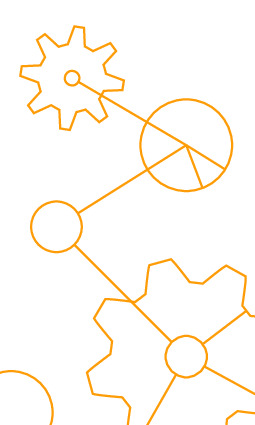|
|
|
| Module code: WIMASc235 |
|
|
2V+2U (4 hours per week) |
|
6 |
| Semester: 2 |
| Mandatory course: yes |
Language of instruction:
German |
Assessment:
Written exam
[updated 18.12.2018]
|
WIMASc235 (P450-0101) Industrial Engineering, Master, ASPO 01.10.2014
, semester 2, mandatory course
|
60 class hours (= 45 clock hours) over a 15-week period.
The total student study time is 180 hours (equivalent to 6 ECTS credits).
There are therefore 135 hours available for class preparation and follow-up work and exam preparation.
|
Recommended prerequisites (modules):
None.
|
Recommended as prerequisite for:
WIMAScWPF-Ing15
[updated 11.03.2020]
|
Module coordinator:
Prof. Dr. Frank Kneip |
Lecturer:
Prof. Dr. Frank Kneip
[updated 11.02.2020]
|
Learning outcomes:
After successfully completing this module students will:
_ be proficient in solving nonlinear equations, can select a suitable solution method and be able to justify their choice.
_ be able to model suitable systems in the form of a linear equation system and identify unknown parameters based on given measurement data.
_ be able to describe the principles of state estimation and time series analysis using hidden Markov models and reproduce known examples, as well as adapt the methods to similar systems.
_ be able to implement the algorithms learned in Matlab
_ be able to interpret their results and check their plausibility
[updated 18.12.2018]
|
Module content:
1. Numerical methods: solving nonlinear equations
1.1. Bisection method
1.2. Fixed-point iteration
1.3. Secant method
1.4. Newton´s method
1.5. Accuracy and termination criteria
1.6. Convergence characteristics
1.7. Applications
2. Parameter estimation: linear equalization
2.1. Modeling
2.2. Method of least squares
2.3. Weighted least squares
2.4. Recursive least squares
2.5. Applications
3. State estimation and time series analysis: hidden Markov models
3.1. Definition and modeling hidden Markov models
3.2. Forward algorithm
3.3. Backward algorithm
3.4. Viterbi algorithm
3.5. Baum-Welch algorithm
3.6. Applications
[updated 18.12.2018]
|
Teaching methods/Media:
Presentation with projector, lecture notes, blackboard, PC, Matlab/Simulink, computer-aided exercises
[updated 18.12.2018]
|
Recommended or required reading:
_ Dahmen, W., Reusken, A.: Numerik für Ingenieure und Naturwissenschaftler; 2. Auflage, Springer, 2008
_ Gramlich, G., Werner, W.: Numerische Mathematik mit Matlab; dpunkt verlag, 2000
_ Björck, A.: Numerical Methods for Least Squares Problems; Society for Industrial and Applied Mathematics (SIAM), 1996
_ Rabiner, L. R.: A Tutorial on Hidden Markov Models and Selected Applications in Speech Recognition; Proceedings of the IEEE, Band 77, Nr. 2, S. 257_286, 1989
_ Fraser, A. M.: Hidden Markov Models and Dynamical Systems; Society for Industrial and Applied Mathematics (SIAM), 2009
[updated 18.12.2018]
|


